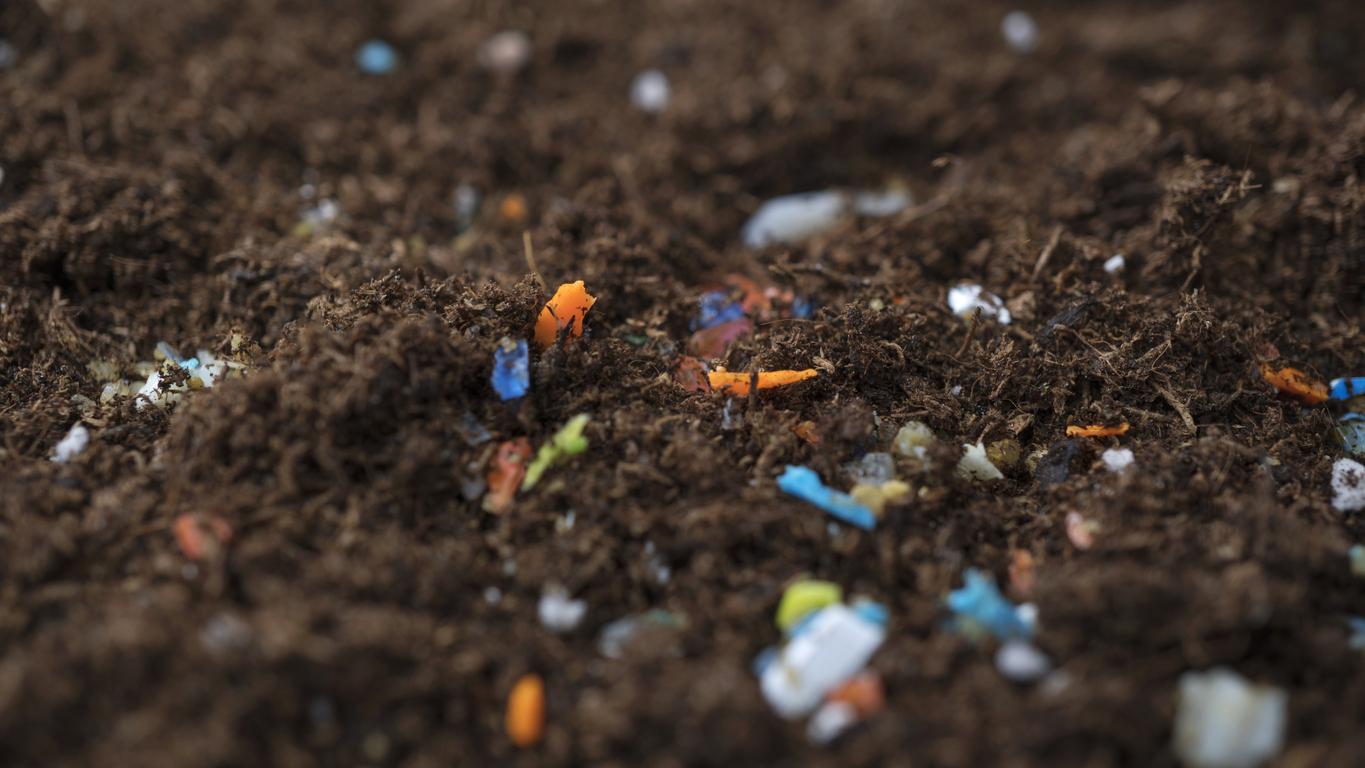Agricultural soils, such as those of large crops or orchards, are the most affected by this microplastic pollution, unlike forests, which are relatively spared, according to a study by the environmental agency Ademe.

- An Ademe study reveals that 76% of French soils contain microplastics, less than 5 millimeters in diameter, mainly polymers present in packaging.
- This pollution comes from multiple sources: landfills, plastic mulch, coated fertilizers, use of wastewater for irrigation, runoff… Microplastics are also massively introduced by organic waste products (PRO), such as sludge from water treatment plants. purification or composts.
- Ademe recommends limiting the use of plastics, improving the sorting of bio-waste and accelerating research into environmental and health impacts.
We already knew that they were accumulating in the oceans and threatening marine ecosystems, but even French soils are today massively polluted with plastic microparticles. This is the conclusion of a study unpublished work from the Environment and Energy Management Agency (Ademe), published on December 26. Meadows, vineyards, orchards, growing areas… “Plastic is everywhere, even cow manure contains it”alerts Isabelle Deportes, engineer at Ademe.
A systematic presence in agricultural soils
For the first time, the study, carried out in collaboration with the National Institute of Agronomic Research (INRAE), analyzed 33 soil samples representative of different uses. The results are clear: 76% of the soils tested (25 samples) contain microplastics, that is to say fragments less than 5 millimeters in diameter, with an average of 15 microparticles per kilogram of dry soil, mainly polyethylene. and polypropylene, polymers mainly present in packaging. Agricultural soils, such as those of field crops or orchards, are the most affected, unlike forests, which are relatively spared.
This pollution comes from multiple sources: landfills, plastic mulch, coated fertilizers, use of wastewater for irrigation, runoff, etc. A majority is directly linked to agricultural activities. Around 430,000 tonnes of plastic films are used each year in Europe for agriculture, recalls Ademe. Even so-called “biodegradable” mulches leave plastic fragments in the soil several years after their use.
Microplastics are also massively introduced by organic waste products (PRO), such as sludge from sewage treatment plants or composts, which help reduce the use of synthetic fertilizers. Out of 167 samples analyzed throughout the country, 166 included microplastics. According to Ademe, these spreadings release between one million and one billion plastic particles per hectare of agricultural soil each year.
Reduce the use of plastic for packaging
The 2020 anti-waste law plans to ban compost from gray trash by 2027, but Ademe is calling for action without delay. It recommends improving the collection of bio-waste and reducing the use of plastics in packaging, the main causes of this pollution. Notably, nearly 75% of microplastics found in soils are less than 1 mm in diameter, which may pose a regulatory challenge. “The texts governing fertilizers set thresholds only for ‘plastic impurities’ greater than 5 mm and, theoretically, soon to 2 mm”specifies The World.
“As we did for aquatic environments, it is now urgent to accelerate research to assess the consequences of this terrestrial contamination on the environment and human health”insists Isabelle Deportes. By supplementing its research with the study of urban and overseas soils, Ademe hopes to offer concrete solutions to stem this silent pollution which lastingly threatens the quality of soils and terrestrial ecosystems.














